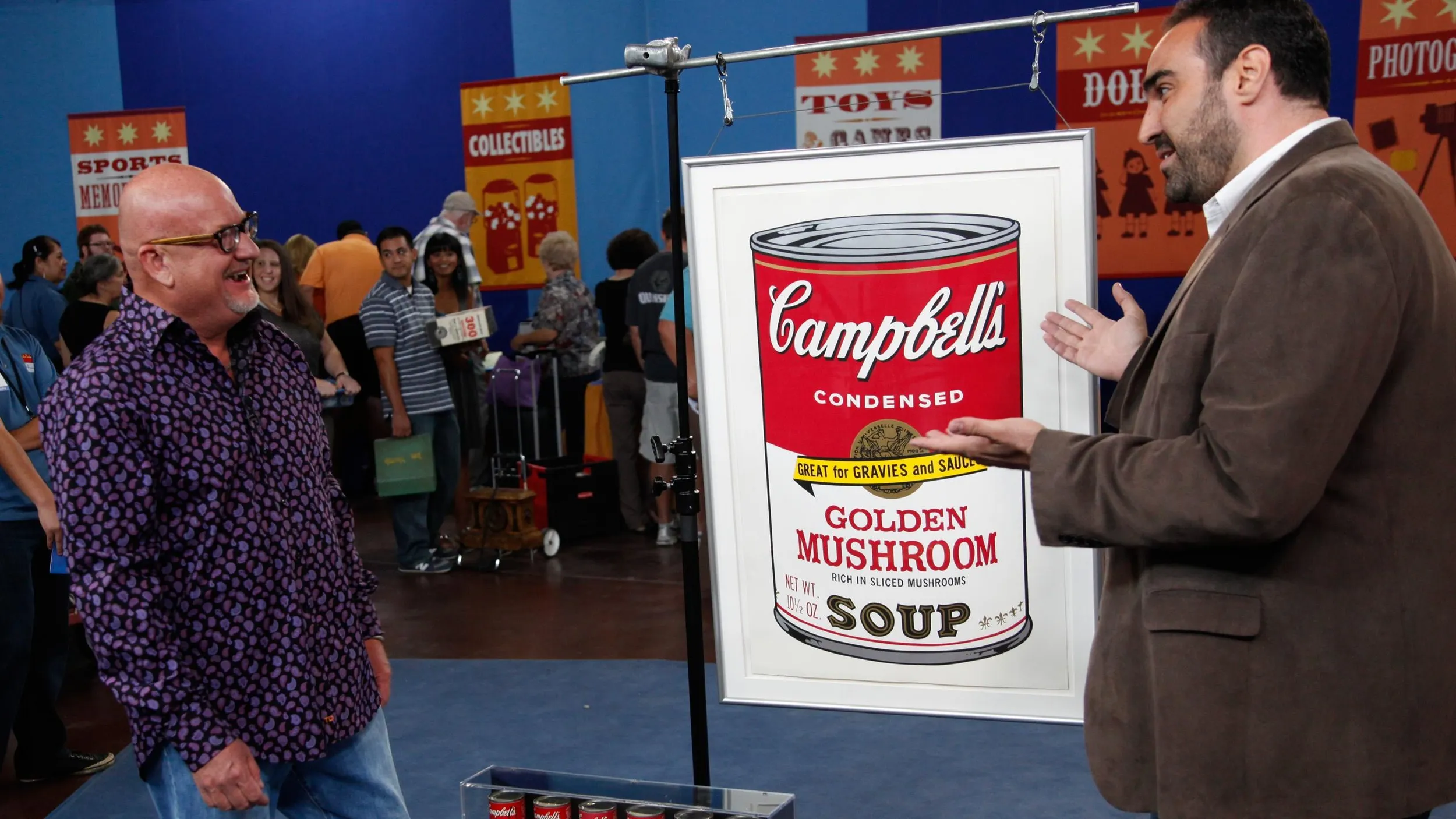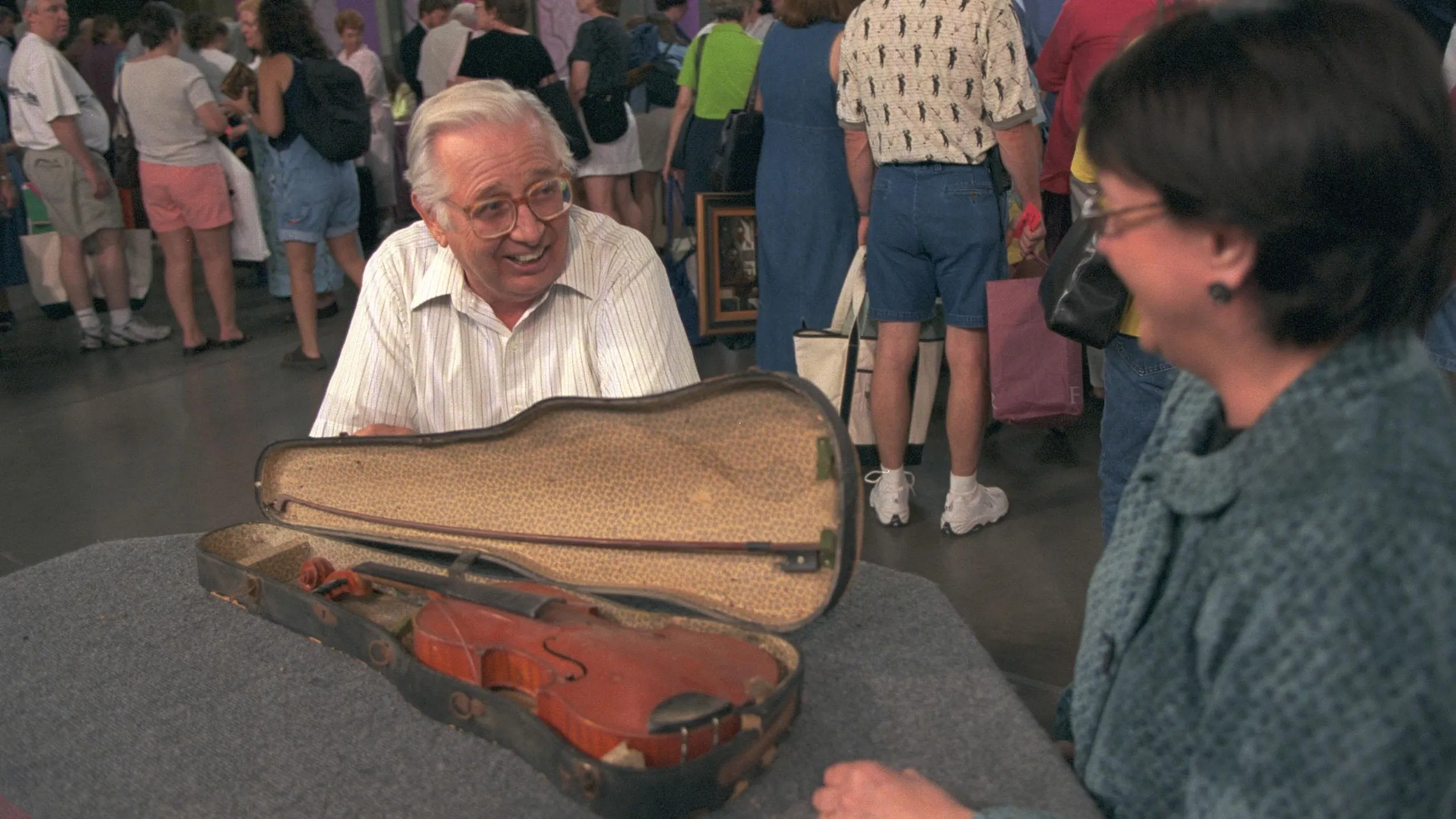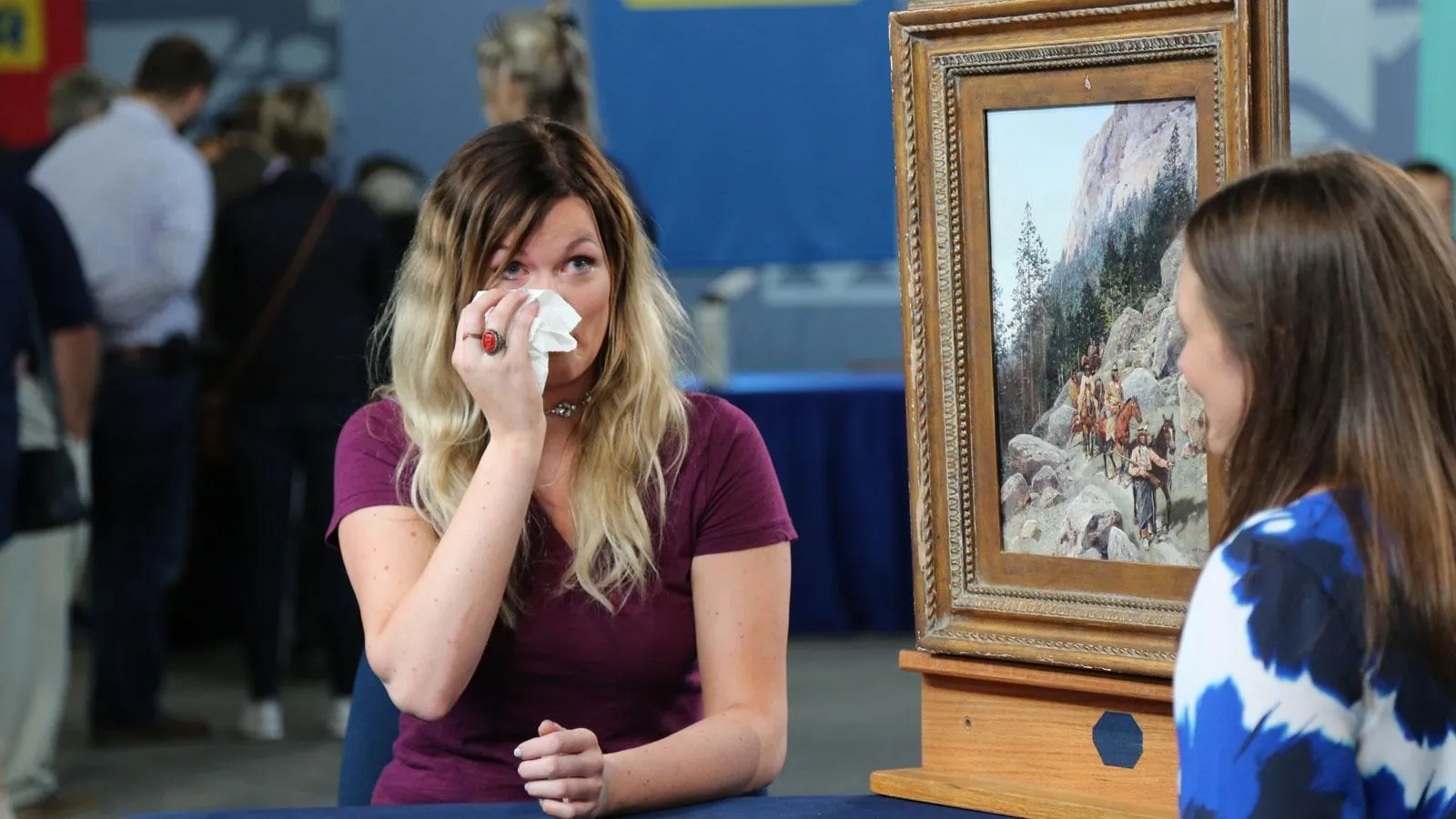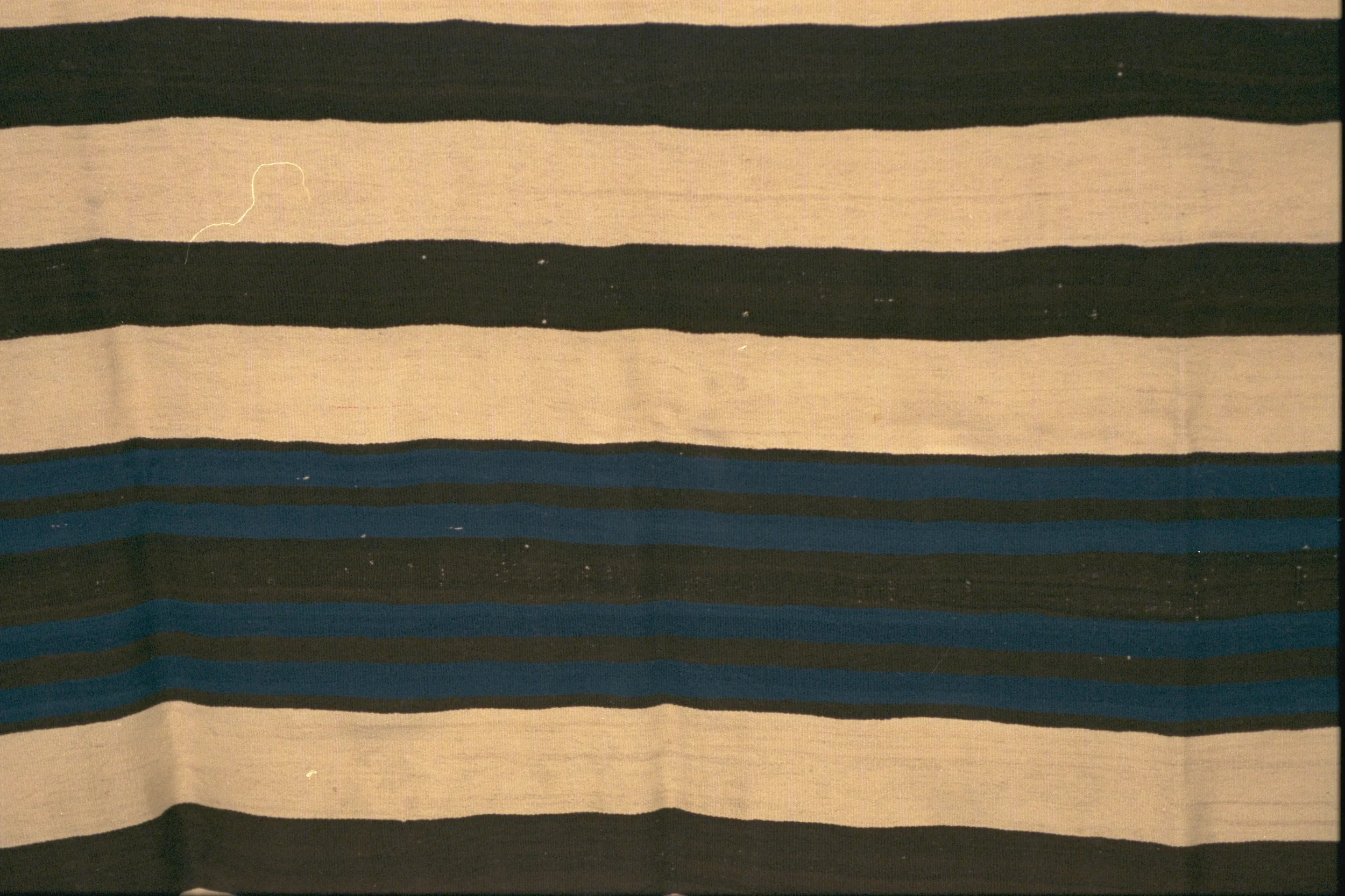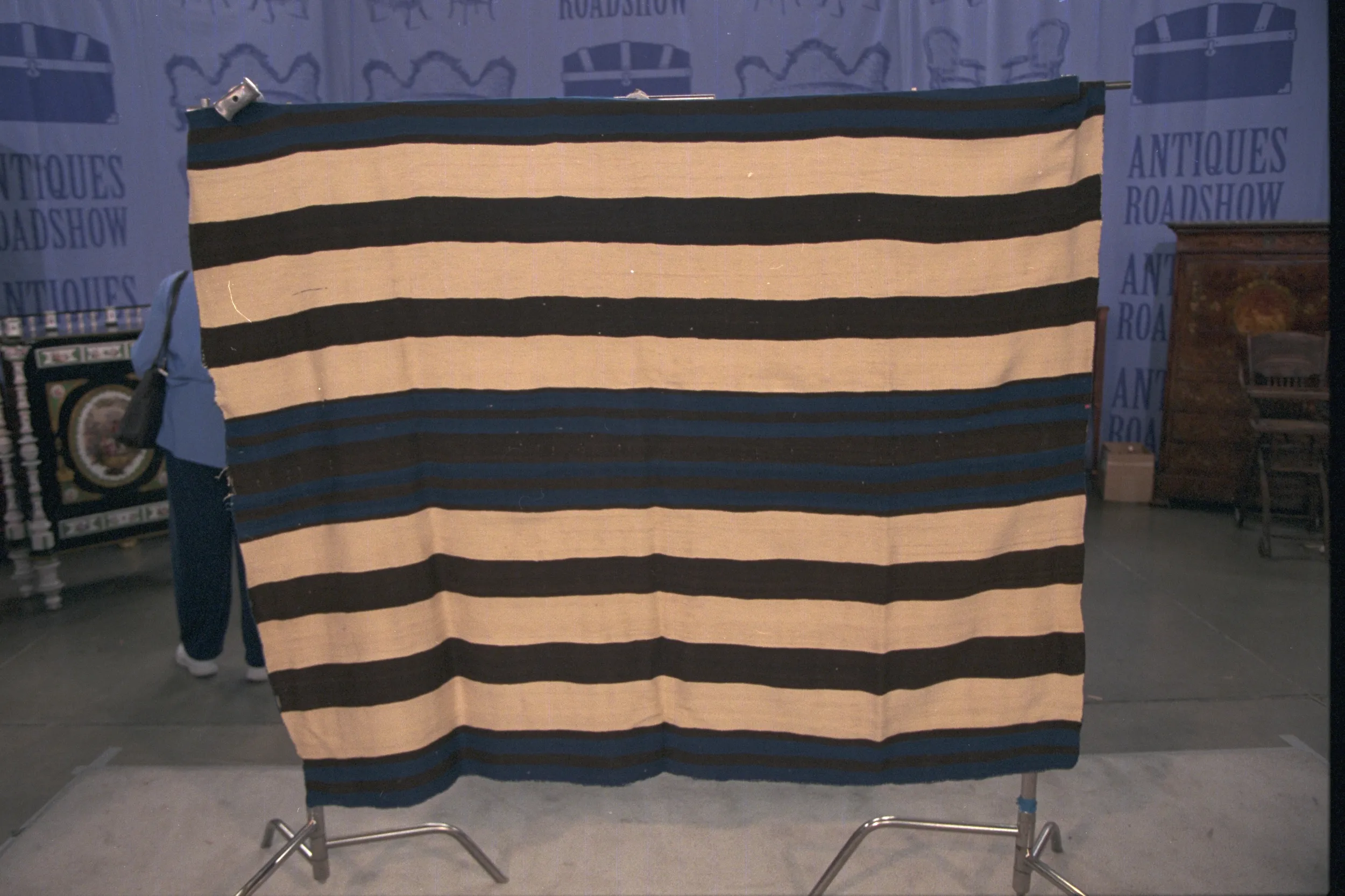GUEST: I don't know an awful lot about it, except that it was given by Kit Carson-- who I'm sure everybody knows, and his history-- given to the foster father of my grandmother.
APPRAISER: And do you know who made this weaving? Do you know what kind of blanket it is?
GUEST: Uh, it's probably a Navajo, but that's about all I know.
APPRAISER: Well, Ted, did you notice, when you showed this to me, that I kind of stopped breathing a little bit?
GUEST: Yeah, you did. (laughs)
APPRAISER: I'm still having a little bit of trouble breathing here, Ted.
GUEST: You took me by surprise, because I, you know, I didn't think much about it. Probably a chief blanket.
APPRAISER: That's exactly what it is. And it's not just a chief's blanket, it's the first type of chief's blanket made. These were made in about 1840 to 1860, and it's called a Ute, first phase.
GUEST: A Ute?
APPRAISER: A Ute, first phase, wearing blanket.
GUEST: A Ute, first phase, wearing blanket. Chief's wearing blanket.
APPRAISER: But it's Navajo-made, they were made for Ute chiefs, and they were very, very valuable at the time. This is sort of, this is Navajo weaving in its purest form. All of these things that we see later, with diamonds and all kinds of different patterns, comes much later than this. This is just pure linear design.
GUEST: Yeah.
APPRAISER: This is the beginning of Navajo weaving. The condition of this is unbelievable-- unbelievable. We see these, we've got a little bit of damage over there. It's made from handwoven wool.
GUEST: Yeah.
APPRAISER: But it's so finely done, it's like silk.
GUEST: Wow.
APPRAISER: It would repel water. And this here is dyed with indigo dyes. It was a very valuable dye at the time. And what's really interesting is, right here, we have an old repair that was probably done in the 1860s.
GUEST: Wow.
APPRAISER: And it's done with raveled bayetta, which is in itself a very important thing in Navajo weaving. So all involved, it's an extraordinary piece of art, it's extremely rare. It is the most important thing that's come in to the Roadshow that I've seen. Do you have a sense at all of what we're looking at here in terms of value?
GUEST: I haven't a clue.
APPRAISER: Are, are you a wealthy man, Ted?
GUEST: No.
APPRAISER: Well, sir, um... I'm, I'm still a little nervous here, I have to tell you. On a really bad day, this textile would be worth $350,000. On a good day, it's about a half a million dollars.
GUEST: (exhaling) Oh, my God.
APPRAISER: And you had no idea.
GUEST: I had no idea. It was laying on the back of a chair.
APPRAISER: Well, sir, you have a national treasure.
GUEST: Wow.
APPRAISER: A national treasure.
GUEST: Gee.
APPRAISER: When you walked in with this, I just about died.
GUEST: Gee...
APPRAISER: Congratulations, congratulations.
GUEST: I can't believe this!
APPRAISER: Now, the value of this that I'm giving is, is not using the Kit Carson provenance. Provenance is sometimes very difficult to ascertain. If, if we could do research on this and we could prove with a, without a reasonable doubt that Kit Carson did actually own this, um, the value would increase again-- maybe 20%.
GUEST: Wow. I can't believe it. My grandmother, you know, were poor farmers. They didn't... She had, her, her foster father had started some gold mills and, and, you know, discovered gold and everything, but there was no wealth. No wealth in the family at all. Whoa... (voice breaking) I can't believe...
APPRAISER: Congratulations.
GUEST: Thank you. Gee, wow. I'm amazed, I'm flabbergasted.

